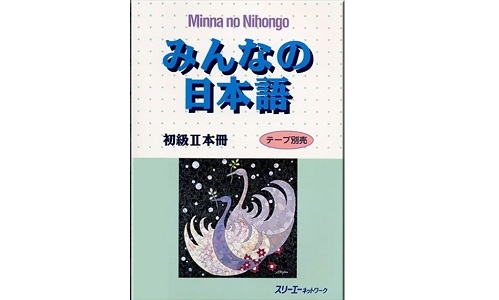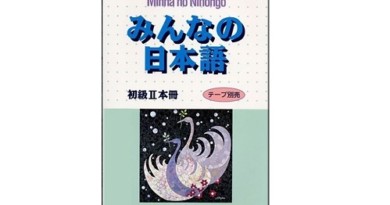Learn minna no nihongo lesson 3
Learn minna no nihongo lesson 3. hi everyone. In this post, Learn Japanese Daily will introduce you the very first lessons in the Japanese course-book : Minna no nihongo (Japanese for everyone)
Learn minna no nihongo lesson 3:
Summary :
(for shorter summary, check here : Summary of Minna no nihongo coursebook lesson 3)
In the lesson 3 of Minna learners will continue with the vocabulary following the subject and some new structures, and the subject of the dialogue in this lesson is about Department store.
First vocabulary, it will divide into 5 groups: demonstrative pronouns, building, counters, money and how to give charge, the last is some communicative structures.
In lesson 2 had shown some demonstrative pronouns, the lesson 3 will introduce some others.
ここ means here place relatively near speaker
そこ means there place relatively near listener
あそこ over there, place physically distance from both speaker and listener
In interrogative sentence どこ is the question word for this type.
こちらis the politeness way to speak of ここ means this way, here.
そちらis politeness way to speak of そこ means that way, there
あちら is same above あそこmeans over there, that place
どちらis the politeness way to speak of どこ
In a building, it has a lot of positions like classroom, lobby, stairs:
じむしょ : office
きょうしつ : classroom
しょくどう : cafeteria
かいぎしつ : conference room
うけつけ : reception
ロビー : lobby
へや : room
トイレ : restroom
かいだん : stairs
エレベーター : elevator
エスカレーター : escalator
うち : house
ちか : basement
To ask about the floor the question word is なんがい means which floor?
くに: country
The third group is counters:
うりば : counter
くつ : shoes
ネクタイ : necktie
ワイン : wine
たばこ. : tobacco
でんわ : telephone
Next, is the group of money.
The currency unit of Japan isえん
To ask about the price Japanese people sayいくら means how much?
ひゃくhundred
せん Thousand
まんten thousand
Next is some fixed structures
すみません”Excuse me”
でございますis the politeness way to speak of すみません. In some case that require the politeness and solemn we use this word
In case to see some thing it will be みてください means please look at…
じゃis the transition of scentence means well, then, so….
Next, is the Grammar part.
The first structure is about place. In the last lesson learners had learned some demonstrative pronouns which is express the position of object きれ。それ。あれ . In this lesson, learners will learn the direction, place to go.
The pronoun ここ show the position of the speaker.
For example: “Here is conference room” it will be ここはかいぎしつです
そこ show the position of the listener.
For example, “There is the classroom of Aki” it will beそこは秋さんのきょうしつです。
Equivalent to あれ, あそこ show the position which is far from both the listener and speaker. For example, “Over there is the cafeteria” means あそこはしょくどうです
こちらis the direction word, equivalent toここ but it is more polite. For example, “This way please” こちらはどうぞ
However, there are one thing that learners have to pay attention. In case the speaker say that the listener is also in his/her position, we have to useここ to show the position of both. Besides that, そこ can also be used to indicate the position of 2 personsあそこshow the position which is far from both.
The second structure is:N1はN2です, it is different from the structure introduce in the lesson 1, this structure is to express the object, person or place in somewhere, in here N1 is a noun refers to person, thing. While N2 is noun of a place. For example, “Tanaka is in conference office” 田中さんはかいぎしつです, or “The cafeteria is over there” しょくどうはあそこです
The structure interrogative sentence N1はどこ・どちら means N1 is the place, どこ is from questioning, if in solemn case we can use どちら. For example “Where is the restroom?” トイレはどこですか . The word どちら as i said before it is the politeness way to speak of the wordどこ. But the main function of どちら is to ask the direction, besides that, when asking name of country, company, school, agency or a organization it also use this word. For example “Which company are you working for?” かいしゃはどちらですか
In Japanese, the structure can be similar but the meaning is different. Next,the structure N1のN2 with a different meaning. This structure is to express the product is producing in a country or company. For example “This is Japanese computer” これはにほんのコンピューターですfrom questioning replace N1 attach with かat the end will change into question, for exampleこれはどこのコンピューターですか means “What kind of computer is it?”
The final structure isおくに in this structure the prefix おis add in front of 1 word that is relate to the listener or third person to express the respect of the speaker. For example if you want to ask “Where are you from?” おくにはどちらですか
Next is some vocabularies about department:
ちゅうしゃじょう : parking car
しょくりょうひん : foodstuff
けしょひん : cosmetics
ふじんふく : woman clothes
しんしふく men clothes
かぐ : furniture
しょっき : tableware
でんきせいひん : electronic goods
こどもふく : children clothes
おもちゃ : toys
ぶんぼうぐ : office stationery
スポーツようひん : sports stuff
りょこうようひん : traveling stuff
めがね : glasses
もよおしもの かいじょう : entertainment venues
おくじょう : Rooftop
ゆうえんち : amusement park
After learning vocabulary part learners should practice it by following the dialogue below.
The situation of the dialogue: Aki come to the counter to buy wine and the salesman consult for her.
Before going to the counter to buy wine, Aki doesn’t know where is the wine she ask the salesman:
すみません、わいんはどこですか “Excuse me, where is the wine counter?”
The salesmen say:ワインはちかです in basement
Aki say thank you and go: ありがとう
After going to wine counter she took a look and chosen the most suitable wine, she said to the salesmen:
すみません、そのワインをみてください“Exuscue me, may i see that bottle, please”
The salesmen take it and give it to her: はい、どうぞ “Yes, please”
Aki wonder: これはフランスのワインですか “This is French wine,ísn’t it”
The salesmen: いいえ、ちがいます、かんこくのです “No, it isn’t, this wine is from Korea”
Aki ask for the price: いくらですか “How much is it?”
The salesmen: 2000円です means “2000 yen”
Aki decided to buy this bottle and she say: じゃ、これをください “I take this one”
The salesmen: はい、わかりました “Yes, i got it”
Above is Learn minna no nihongo lesson 3. Check out Check out the next lesson here : Learn minna no nihongo lesson 4 or see other similar lesson in category : learn japanese for beginer or learn japanese with minna no nihongo. We hope with the instruction in this post, you will find that learning Japanese is not so difficult and you can learn Japanese by yourself. If you have any question, just leave us your question below the post.
Stay with us on :
Facebook - Twitter - Pinterest - Reddit


